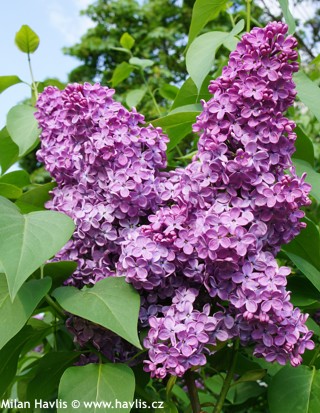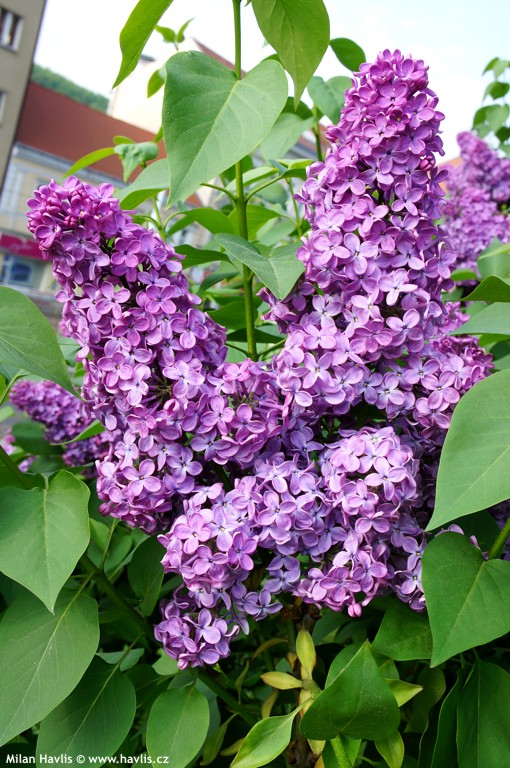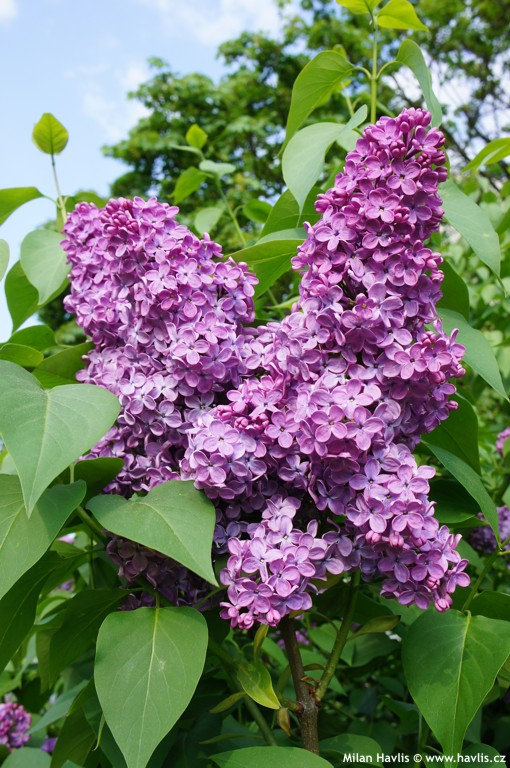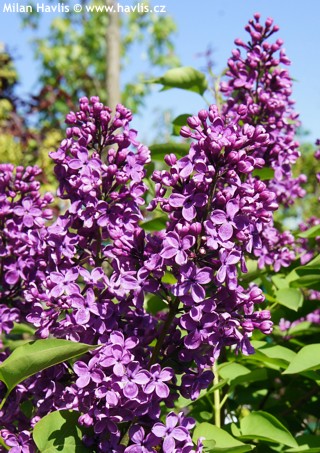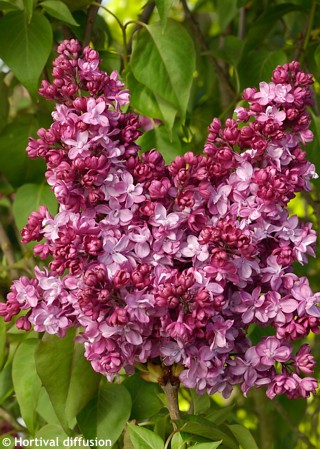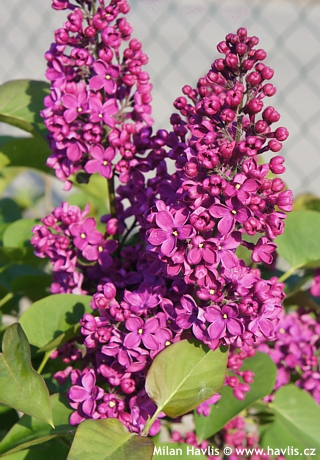Syringa vulgaris 'CHARLES JOLY' common lilac


Syringa
Lilacs, although not native to Czechia, belong among our most common shrubs. In literature and art, they are associated with May as a month of love, e.g., in The Barrel-Organ poem by Alfred Noyes (1903). They are profusely flowering deciduous shrubs or small trees whose undemanding cultivation helped them become a household name in many temperate gardens around the world. And sometimes they escape those to live happily in the wild, out of maintained areas. Lilac is from the olive family which consists of about 615, often vastly heterogeneous species. Apart from its ornamental purpose, it was used in natural healing and is used in modern pharmacy still today. Its sturdy but flexible wood is used in furniture making for small elements, and above all it was believed that lilac drives away evil spirits, which is why it was so often planted very close to homes and main doors.Common lilac comes from S.E. Europe and Asia Minor and the very first plant that appeared in Europe has an interesting history. In 1566, it was brought from Constantinople in the Ottoman Empire (today's Istanbul in Turkey) to the royal court in Wien (Vienna, Austria) by the Ottoman imperial ambassador Ogier Ghislain de Busbecq to the king and emperor Maximilian II Habsburg as a gift during diplomatic negotiations, while the Ottoman Sultan Suleiman I tried to capture the fortress of Szigetvár, which was in the way of his troops advancing on Vienna. Lilac survived, Sultan did not.
Lilac flowers are symbols of liberation in former Czechoslovakia. When on 8th May 1945 Germany surrendered, its Wehrmacht armies were supposed to leave our country. Still, there were many SS units that refused to accept signed capitulation and continued killing Czech and Slovak people. The next day 9th May 1945 early in the morning Ukraine troops lead by marshal Konìv crossed the border entering Czechoslovakia and helped us get rid of the last SS units whose aim was to be taken captive by US armies rather than Soviet armies. 8th May was proclaimed our national holiday as the Liberation Day and Soviet soldiers are portrayed in pictures receiving flowers of just flowering lilacs from grateful Czech people. Lilacs and their fragrance became symbols of liberation and freedom in our country and not even 40 years of communist propaganda misusing this image could not take anything of its beauty away.
Lilacs are easy to grow. They will take almost any soil but will thrive in deep, fertile, well-drained soil that is neutral or slightly alkaline. They respond well to hard pruning. Adult plants often make suckers forming an even denser, multistemmed shrub. Any unwanted overgrowth can be controlled by using a breathable plastic mulching fabric above its roots. Though considered heat-loving plants they are very hardy to about -37 °C (USDA zone 3).
Last update 08-02-2012; 03-01-2024
Goods are shipped all over Europe. For Russia and U.K. and for further details please read about SHIPPING OPTIONS HERE.
Are you interested in a serious discount for orders NOV-FEB? Check your options here.
THE PRICES INCLUDE VAT of 15%. For quick conversion you can use 1 CZK = approx. 0.04 EUR
- STANDARD QUALITY - Plants of this group are 1st class quality with number of branches and overall density adequate to their size and age, considering they were container grown.
- DE LUXE QUALITY - This label guarantees a luxurious quality of manually selected plants that, compared to their height and age, are exceptionally dense and beautiful.
- EXTRA - These plants are usually mature and bigger specimens with exceptional overall appearance.
- STANDARD (as described in the plant form) means a tree with a trunk of 190-210 cm and a crown at the top, unless specified differently. The commercial size for trees is their girth measured in the height of 1m from ground.
- HOBBY - These plants are of the same quality as our standard-quality plants but younger and therefore cheaper.
- SHRUB - a woody plant with branches growing bushy from the ground level.
- HALF-STANDARD or MINI-STANDARD - a small tree with shorter trunk, its size is usually specified.
- FEATHERED - These are trees with branches growing already from the base of the trunk and up along the stem.
- GRASSES and PERENNIALS - Sizes given usually read the diameter of the pot or the clump, as specified.












